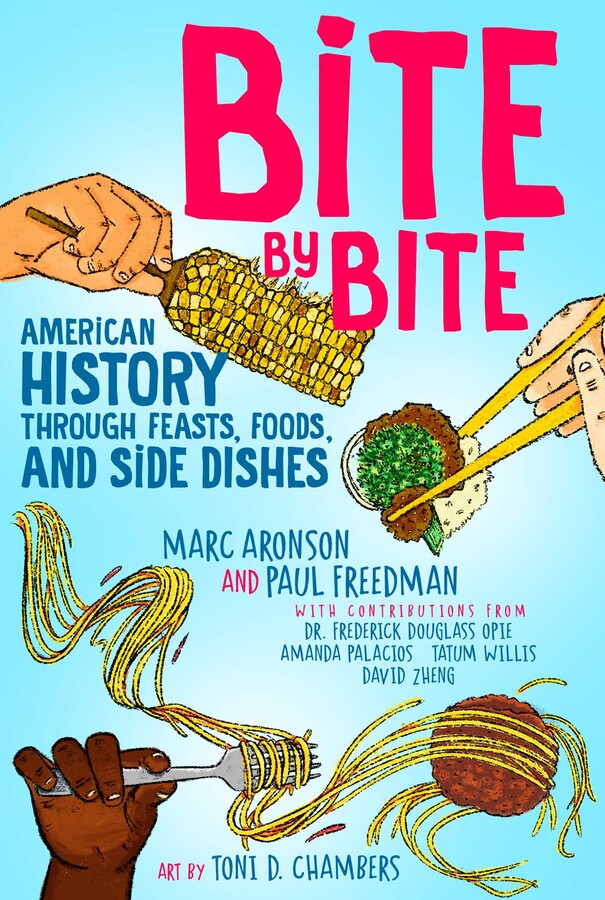Plus, receive recommendations and exclusive offers on all of your favorite books and authors from Simon & Schuster.
Bite by Bite
American History through Feasts, Foods, and Side Dishes
LIST PRICE $10.99
Digital products purchased on SimonandSchuster.com must be read on the Simon & Schuster Books app. Learn more.
Free shipping when you spend $40. Terms apply.
Buy from Other Retailers
Table of Contents
About The Book
As American as apple pie. It’s a familiar saying, yet gumbo and chop suey are also American! What we eat tells us who we are: where we’re from, how we move from place to place, and how we express our cultures and living traditions.
In twelve dishes that take readers from thousands of years ago through today, this book explores the diverse peoples and foodways that make up the United States. From First Salmon Feasts of the Umatilla and Cayuse tribes in the Pacific Northwest to fish fries celebrated by formerly enslaved African Americans, from “red sauce” Italian restaurants popular with young bohemians in the East to Cantonese restaurants enjoyed by rebellious young eaters in the West, this is the true story of the many Americas—laid out bite by bite.
About The Illustrator
Toni D. Chambers (she/her) is an electric lady born and raised in Southern New Haven, Connecticut. She earned her BFA in illustration at the University of Massachusetts. Currently, she is living her best life as an illustrator in Landover, Maryland. Born to Jamaican immigrant parents, Toni has always considered family, culture, and the arts prominent, inspiring forces in her life. She’s always wanted to be an artist, whether as a dancer, actress, or singer. Her passion for reading and storytelling led her to a career as an illustrator.
Product Details
- Publisher: Atheneum Books for Young Readers (May 28, 2024)
- Length: 176 pages
- ISBN13: 9781665935524
- Grades: 5 and up
- Ages: 10 - 99
Browse Related Books
Raves and Reviews
★ “. . . Aronson and Freedman here set out a cultural anthropology of American cuisine sure to please history buffs and foodies alike. . . . There’s plenty of depth and context in each short chapter to leave readers satisfied, while end-of-chapter asides (dubbed 'Side Dishes') offer palette cleansers that focus mostly on the origins of specific foods.”
– The Bulletin of the Center for Children's Books, STARRED REVIEW
“[This] book . . . represents other American food traditions, including those of European, Native American, and African influence. There’s a great deal of well-organized information here for readers intrigued by the history of food in North America.”
– Booklist
“The text-heavy pages and an ample index will appeal to students researching history or food. Those reading for pleasure will be immersed in the captivating writing . . . A recommended purchase that will find a satisfied audience among tweens and teens researching food or American history.”
– School Library Journal
"Rightly calling out the fallacy of regarding apple pie or any other food as quintessentially “American,” the authors have enlisted feedback from a squad of food historians to highlight dishes and cuisines that have earned significant places in this country’s story. . . . readers will come away with a food-forward overview of the “waves of prejudice and progress” that have characterized our multicultural history, not dating from 1492 or 1619 but from thousands of years ago."
– Kirkus Reviews
Awards and Honors
- Dogwood Reader Award Final Nominee (MO)
Resources and Downloads
High Resolution Images
- Book Cover Image (jpg): Bite by Bite eBook 9781665935524
- Author Photo (jpg): Marc Aronson Photograph © Marina(0.1 MB)
Any use of an author photo must include its respective photo credit


















